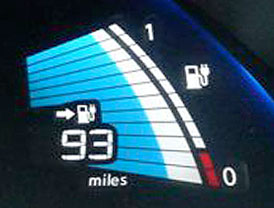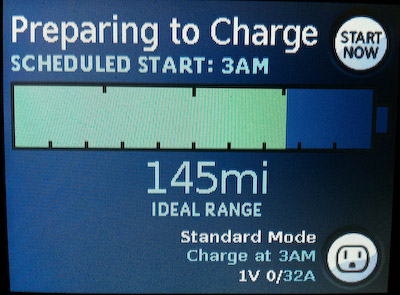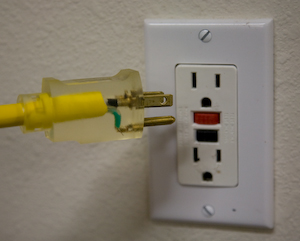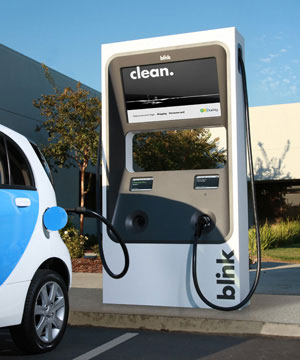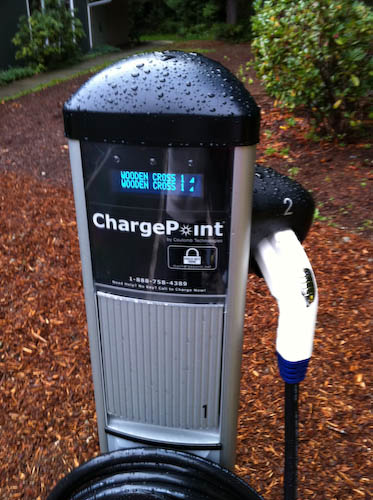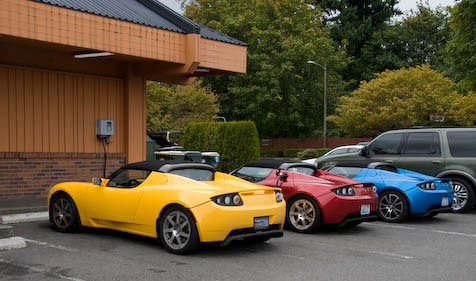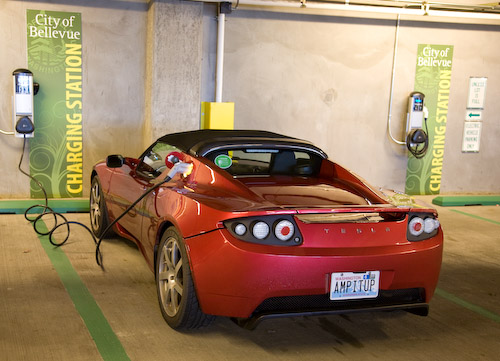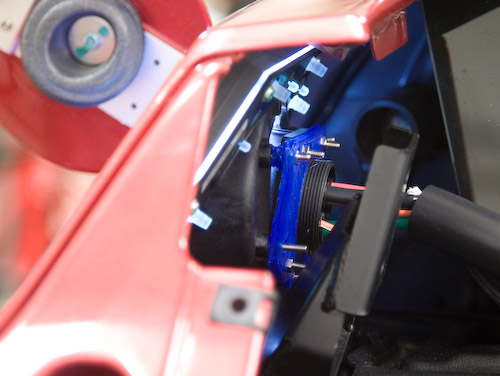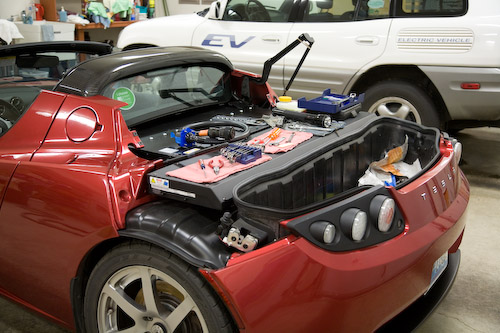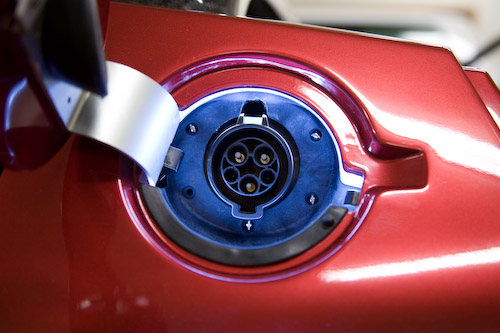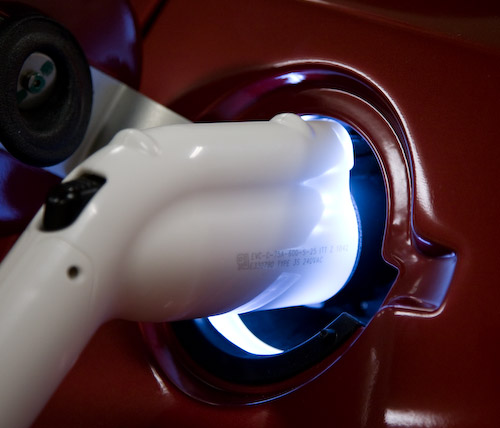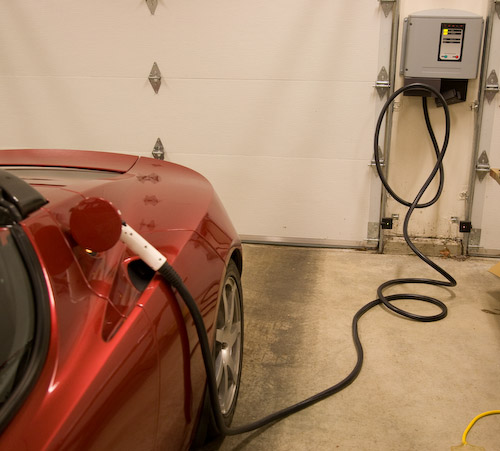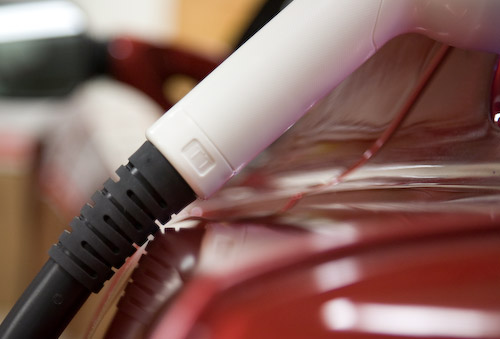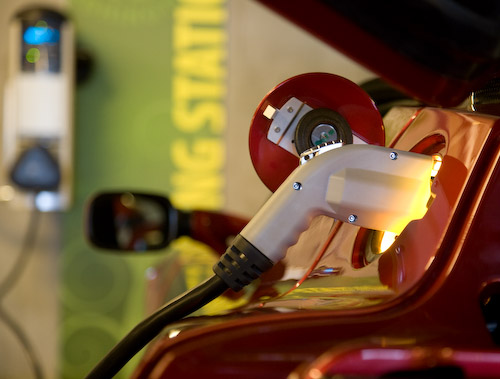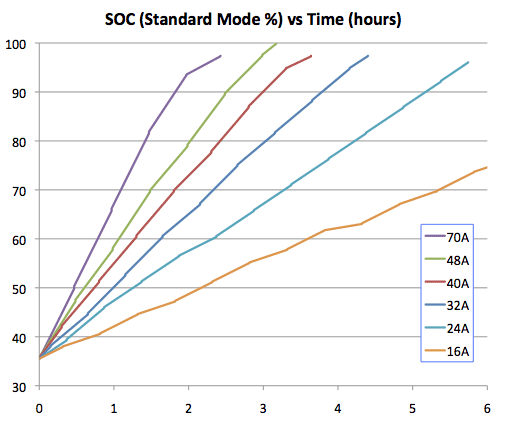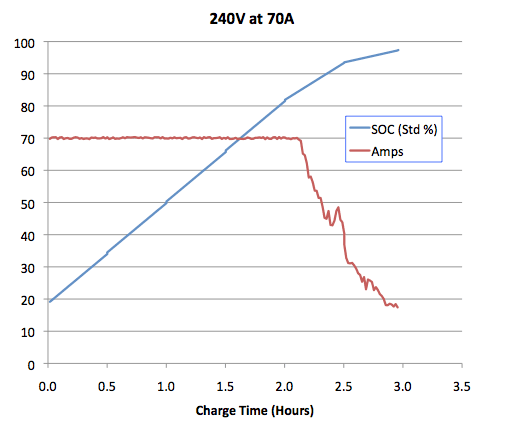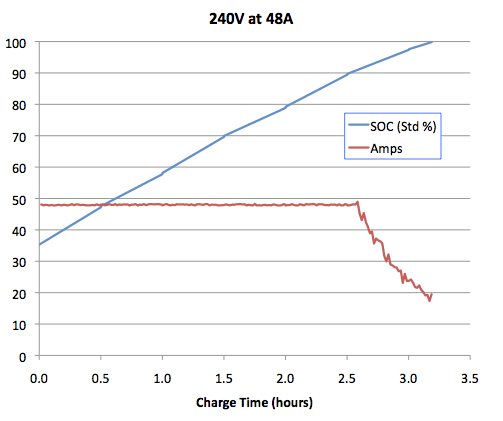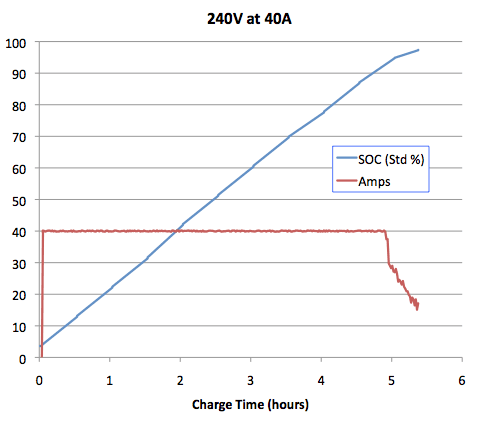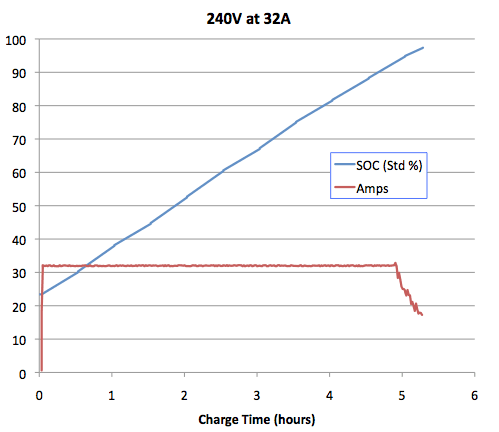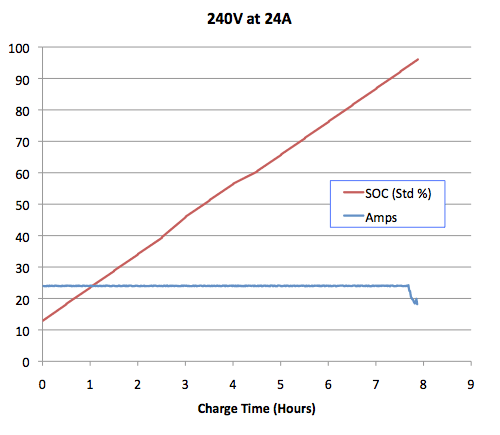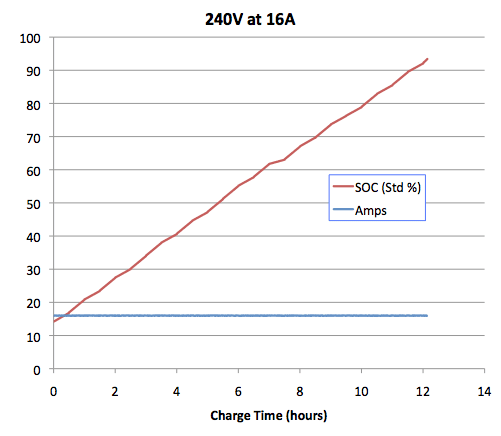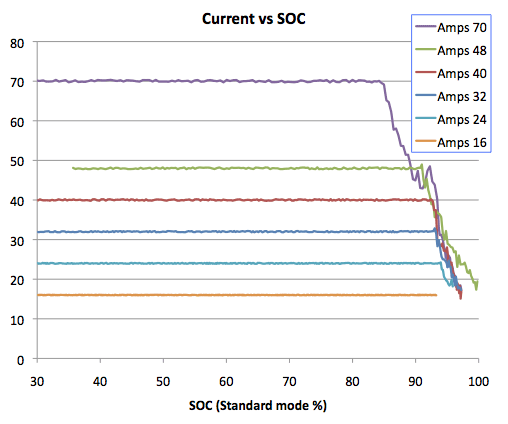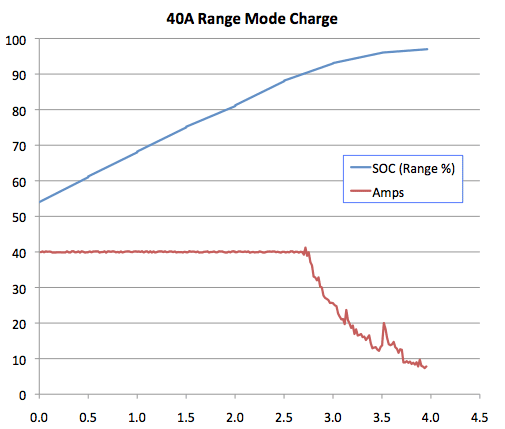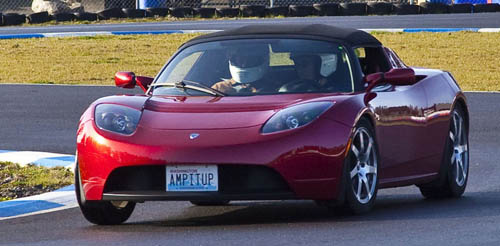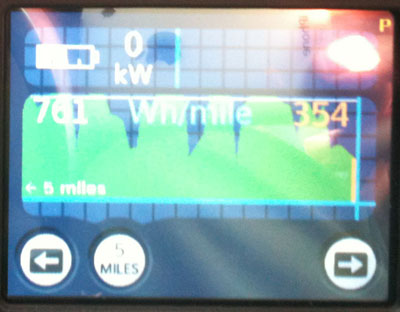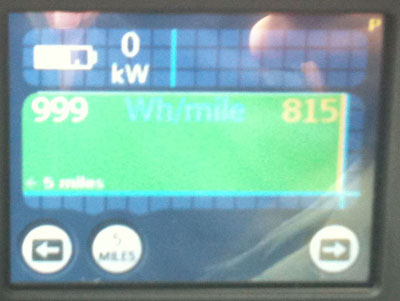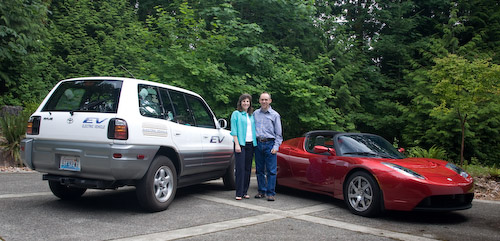 We have driven the RAV4-EV over 20,000 miles and the Roadster over 18,000. The only maintenance we've had to pay for has been replacing tires and a 12V accessory battery. Since we don't have to take our cars in for oil changes every three months, we have to fill the wiper fluid ourselves.
We have driven the RAV4-EV over 20,000 miles and the Roadster over 18,000. The only maintenance we've had to pay for has been replacing tires and a 12V accessory battery. Since we don't have to take our cars in for oil changes every three months, we have to fill the wiper fluid ourselves.Sometimes I wonder if the Roadster has lost some acceleration over the past two years, it just doesn't seem that crazy fast to me anymore. Yet when I take someone for a demo ride and they gasp/yell/squeal/swear when I do the 0-60 demo, I realize the car hasn't changed, I've just gotten used to what it can do.
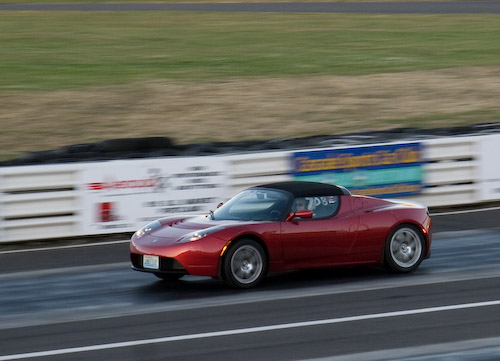 I've broken 100 mph on a quarter-mile drag race track so many times it's boring. I've been in the passenger seat with a real race car driver showing me what the car can do on an autocross track, and then giving me pointers while I drove the same course.
I've broken 100 mph on a quarter-mile drag race track so many times it's boring. I've been in the passenger seat with a real race car driver showing me what the car can do on an autocross track, and then giving me pointers while I drove the same course.The RAV4-EV is less flashy than the Roadster, but it can haul five adults and a fair amount of cargo. Even with 64,000 miles it's still getting over 100 miles of range per charge, about the same as when it was new. It gets a little less range in the winter, but it still surprises me how little we need to drive beyond its range. Cathy laughs at me when I worry we need to take the Roadster for some lengthy drive, but when I check the distance it turns out to be half of what the RAV4-EV can do on a single charge.
Cathy and I have done enough distance driving in the Roadster that it's old-hat now. With a few strategic Tesla charging stations scattered around, plus maps of places to find alternative charging, planning charging stops is now an opportunity to explore somewhere new that in the old days we would have just driven past. We had a delightful lunch at a scary-looking tavern in Artic, WA, that had the same sort of local regulars you'd expect to see in an episode of Cheers. We have a new favorite burger joint, Burgerville, which means something for two vegetarians. We have made friends in Portland, Ellensburg, Coeur d'Alene, and Vancouver, B.C., and at Puget Sound Energy and the Wild Horse wind farm.
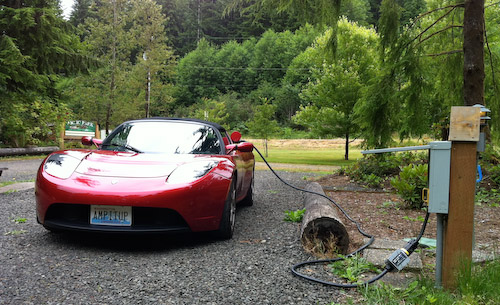
We have talked ourselves hoarse at many car shows (both official and impromptu) and I can't even guess how many people we've had the pleasure of talking to about driving electric. Long ago, I lost count of how many times we've helped a reporter write a more informed article about EVs.
With all we've done and as many people as we've personally reached, it's humbling to know many people in the community who have been doing even more of the same thing, some for decades.
We've made many friends from the Roadster and RAV4-EV owner communities and the broader EV community; too many amazing people to even try to enumerate.
What a wonderful experience it's been to AMP IT UP!
